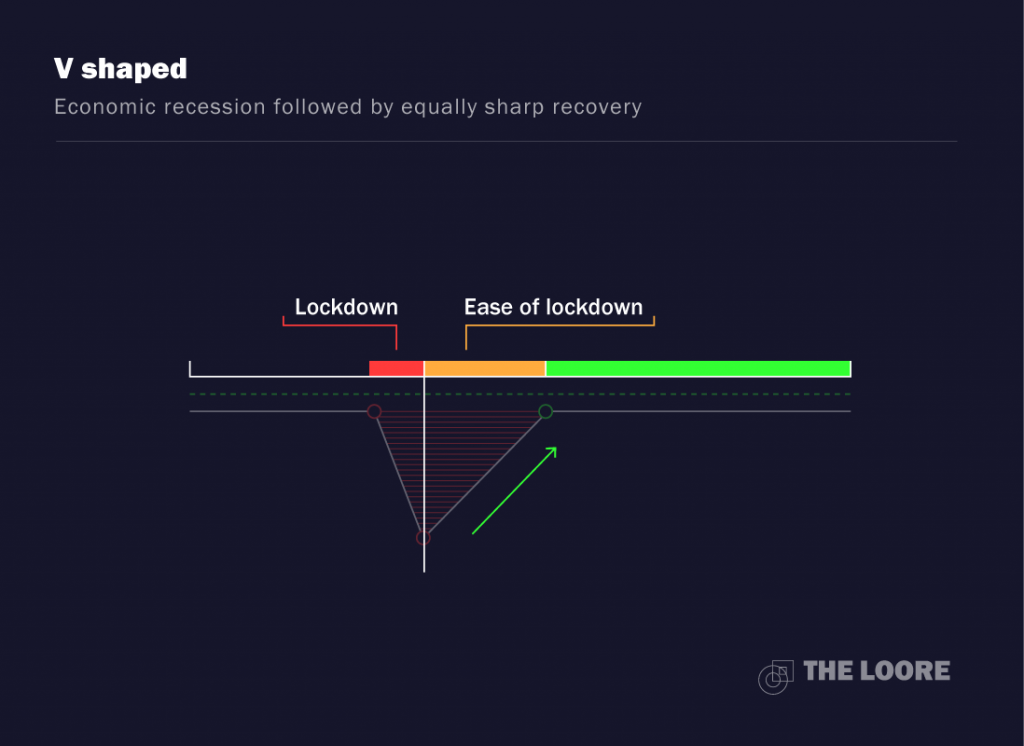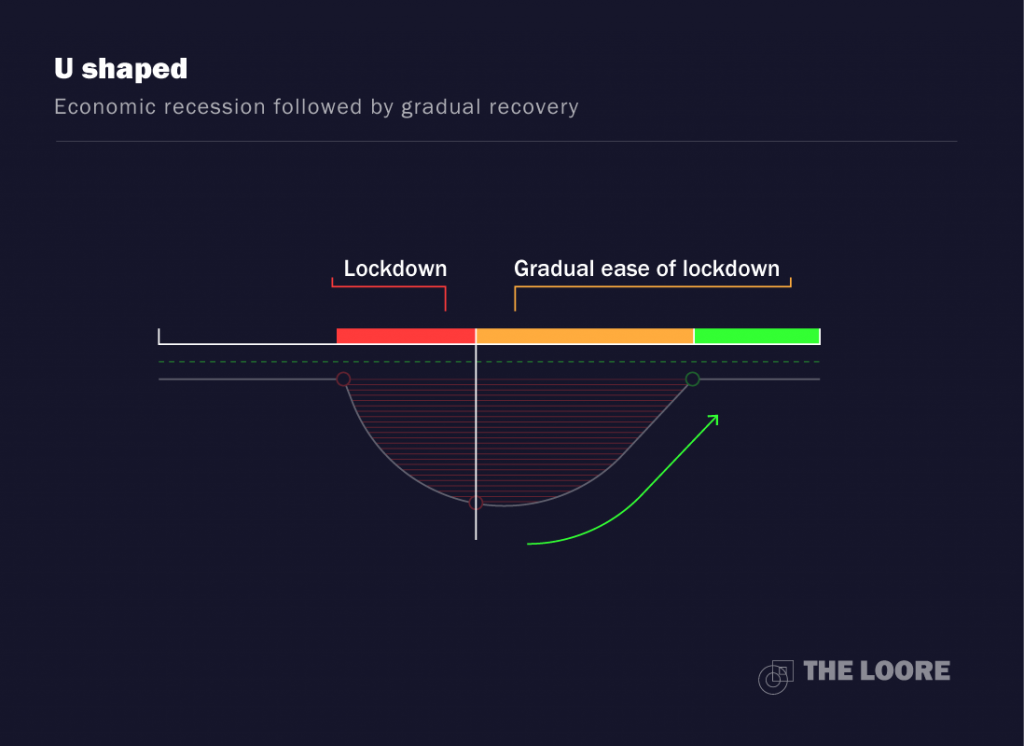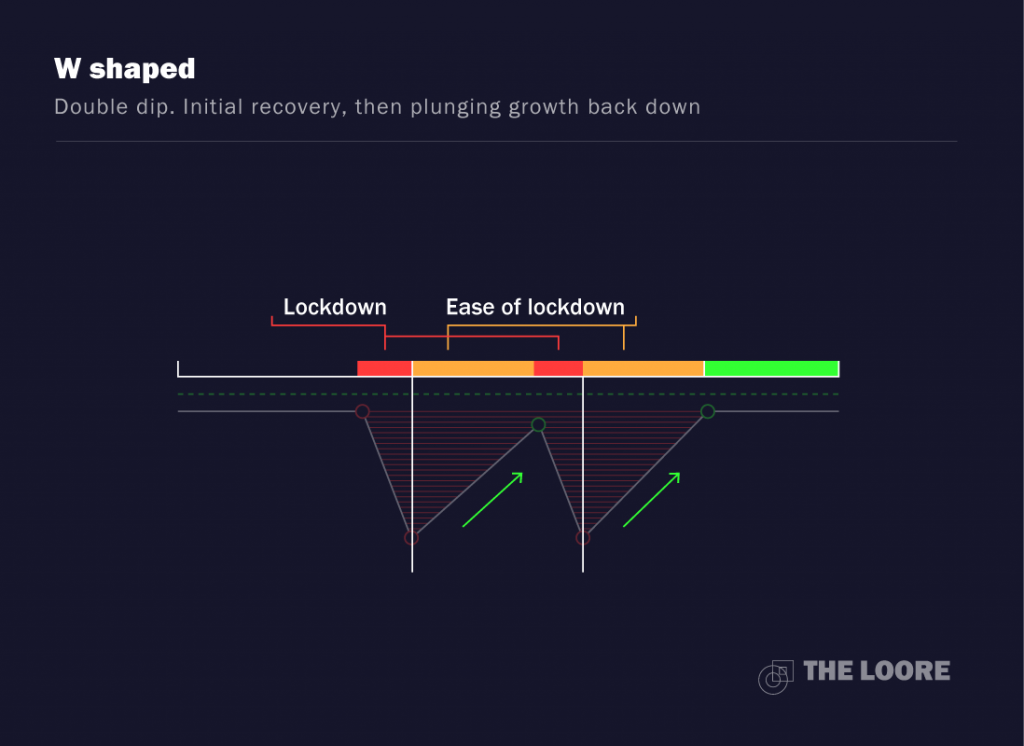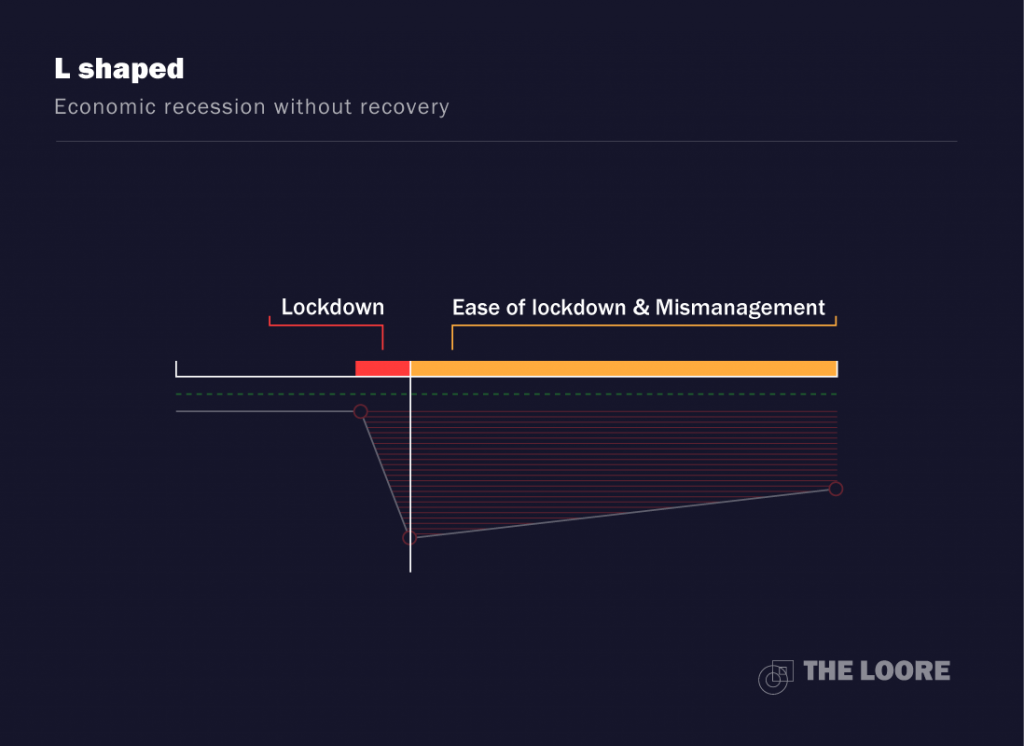With the global spread of COVID-19 and subsequent lockdowns by the majority of countries around the world, economies have taken a sudden blow, freefalling to levels not seen since the second World War. With soaring unemployment and economic uncertainty, economists have been referring to the graphical representations of ‘recession shapes’, to map out the potential trajectory of world economies during and after the pandemic.
What are ‘recession shapes’?
They are graphical representation used by economists; often taking the shape and form of letters, most commonly ‘V, U, W and L’; to describe the different types of economic recession/recovery.
- V shaped: Economic recession followed by equally sharp recovery.
- U shaped: Economic recession followed by gradual recovery.
- W shaped: Double dip. Initial recovery after recession; but effects weigh in, plunging growth back down.
- L shaped: Economic recession without recovery.

COVID-19 recession; what would it look like?
Although the world has been through different pandemics throughout modern history, what differentiates the COVID-19 pandemic is the sheer effect it is having on the world economy. Gross domestic product figures saw its worst decline for 1st quarter of 2020 since WWII, stirring debate on what shape would economic recovery take on a graph.
“It is an abrupt stop of economic activity, from 100 to zero in just a few days or weeks,” said Carsten Brzeski, global head of macro at ING Research; rendering predictions of economic outlook difficult; also varying between different countries depending on their responses.
Best case scenario: V shaped.
Recession would be brief and severe because of the sudden lockdown; but after a few months, as a result of fiscal and monetary support, and easing of restrictions; growth plunge is followed by an equally sharp recovery.

Most likely scenario: U shaped.
Economic recovery will be more gradual and slower; as long as the threat of COVID-19 looms large, it will be impossible for countries to completely ease lockdown measures, thus preventing the economy from rebounding quickly and sharply.

Possible scenario: W shaped.
After easing lockdown measures, the economy rebounds. However, in the case of an absence of good and efficient national health response, a second wave of COVID-19 infection would demand another strict lockdown, plunging growth again for a second time.

Worst case scenario: L shaped.
A complete lack of government action; without rigorous and effective economic and health policies, the outlook for growth would take the shape of an L, meaning there will be no economic recovery after the pandemic.

Past experiences:
Looking back at previous pandemics and recessions, economic growth had taken the V shaped pattern in “six of the past seven recessions”. Moreover, during the SARS outbreak in 2003, which spread to far less countries and disappeared far quicker than COVID-19, growth recovery also took the form of a V shape. In 2020, COVID-19 is posing a much greater and difficult challenge on the economies of the world, with different responses by countries, some more successful than others; which poses the question…
What shape will the economic recovery of the world take?
